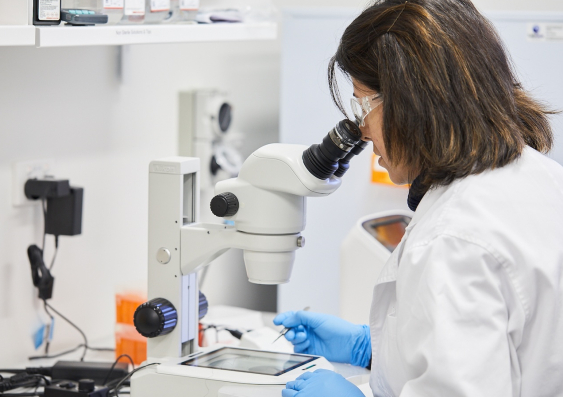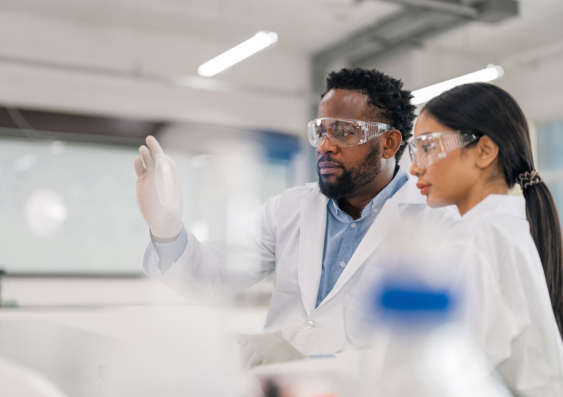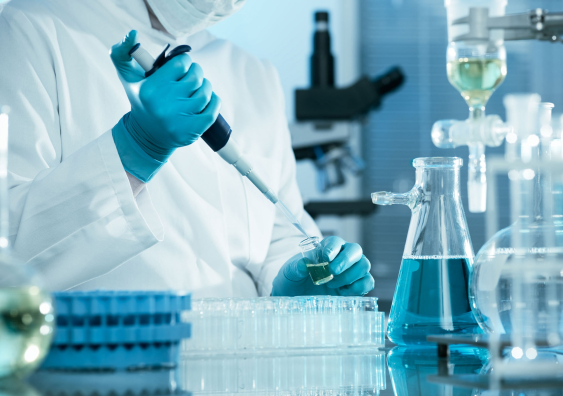New technology to tackle Australia’s solar waste crisis among UNSW projects to receive over $11m in funding
2024-02-13T11:44:00+11:00

UNSW was involved in 17.5 per cent of awards nationally since the scheme began in 2016.
Image: Getty Images.
The four industry-led projects involve lithium battery recycling, solar panel e-waste technology, eye disease treatment and infection diagnostics.
UNSW Sydney researchers working with industry to fast-track new medical treatments and recycling solutions have been awarded $11.1 million in the latest round of the Federal Government’s Cooperative Research Centres Projects (CRC-P) funding.
The CRC-P Program links researchers with industry to develop products with commercial uses. Round 15 was open to all industry sectors with a focus on supporting projects in line with Federal Government priorities, including the (NRF) priority areas and the circular economy.
Professor Nicholas Fisk, UNSW Deputy Vice-Chancellor of Research & Enterprise, said: ‚ÄúOur academics continue to make strong connections with industry under this scheme, with UNSW leading the Go8 this round, and overall being involved in 17.5 per cent of awards nationally since the scheme kicked off in 2016.‚ÄĚ
He welcomed the diverse range of projects selected in this round of CRC-P projects, ranging from recycling technologies through to medical diagnostics. ‚ÄúSuch strategic alignment is key to advancing innovation, ultimately leading to better social and economic outcomes,‚ÄĚ he said.
The four projects include:
Tackling the surge of solar panel e-waste
Lead researchers Associate Professor Ailar Hajimohammadi and Professor Ziv Hameiri at UNSW Engineering and their industry partners received $3 million to work on the rising challenge of recycling solar panel e-waste.
In Australia over 100 million solar panels have been installed, the highest per-capita uptake in the world. Globally however, there is no efficient method to determine when photovoltaic (PV) modules reach their end of life or how they should be recycled or reused.
In collaboration with solar panel recycling company PV Industries, e-waste recycling company ReSource and renewable energy developer Spark Renewables, UNSW will develop a large-scale solar panel evaluation and recycling process - from decommissioning to end-markets - using machine-based and deep learning.
‚ÄúThe final product will be a cloud-based solution where luminescence images of the modules are uploaded, and a report is automatically generated recommending the preferred end-of-life path,‚ÄĚ Prof. Hameiri said.
‚ÄúPV energy is the only way to save this planet,‚ÄĚ Prof. Hameiri said. ‚ÄúThis project takes a direct approach to tackle two pressing challenges linked to PV energy. Firstly, it addresses the issue of end-of-life management, aiming to steer clear of contributing to landfills with additional waste. Secondly, it focuses on enhancing sustainability by extracting valuable materials like aluminium, glass, silicon, and silver.‚ÄĚ
‚ÄúThis strategic alignment not only promotes environmental responsibility but also showcases a collaborative relationship that drives sustainable innovation,‚ÄĚ A/Prof. Hajimohammadi said.
Upscaling lithium-ion battery recycling
UNSW Engineering’s Professor Guan Yeoh and Dr Cheng Wang along with ARC Laureate Professor Veena Sahajwalla and Dr. Rasoul Nekouei from UNSW Science were awarded $2.7 million to develop a novel process for recycling lithium-ion batteries in collaboration with industry partners Oxleigh.
Prof. Sahajwalla said there’s been a rise in waste as electric vehicle (EV) batteries near the end of their lifecycle.
‚ÄúThis project aims to develop a safe and environmentally sustainable micro-isolation process specifically designed to treat the black mass or shredded material from waste lithium-ion batteries,‚ÄĚ she said.
Prof. Yeoh said: ‚ÄúThe novelty of this technology is that it utilises an under-explored chemistry for a new application for recycling lithium-ion batteries.‚ÄĚ
New treatment for the leading cause of blindness in the elderly
A project to develop a treatment for the debilitating eye disease, wet age-related macular degeneration (AMD), received $2.4 million.
UNSW Medicine & Health Professor Levon Khachigian will work with Filamon Limited and MedChemSoft Solutions on a cost-effective treatment that has the capacity to revolutionise the management of AMD. The disease is the main cause of blindness in the elderly and is projected to affect around 288 million people by 2040. It considerably constrains independent living and is increasingly a major cost of aged care.
¬†‚ÄúCurrent drugs need to be injected directly into the patient‚Äôs eyeball, typically on a monthly basis, which can cause patient drop-out,‚ÄĚ Prof. Khachigian said. ‚ÄúMany patients do not respond optimally to these drugs or lose response over time.‚ÄĚ
The researchers have identified a drug which has the potential to be self-administered by eyedropper. Macular Disease Foundation Australia is also a partner in the project, bringing the patient’s perspective.
Swift and precise diagnostic testing in healthcare
Professor Ewa Goldys from UNSW Engineering will work with medical technology company Avicena Systems on a new automated diagnostic and biosecurity platform, after receiving $3 million.
Swift detection of infection in symptomatic and asymptomatic people is critical in high-risk settings such as aged & health care, maritime industries, and defence scenarios.
Driven by novel biochemistry research, the new platform will be faster than conventional gene-based tests and offer a highly accurate substitute for lab-based (PCR) diagnostics, with low running costs.
‚ÄúThis uniquely scalable application of UNSW‚Äôs ‚ÄėNanoCircle‚Äô technology could significantly advance the capabilities of large enterprises, including health authorities and defence forces, to swiftly identify pathogen threats to human and animal populations at scale,‚ÄĚ Prof. Goldys said. ‚ÄúThis has the potential to fundamentally transform disease detection, public health, and biosecurity responses.‚ÄĚ












